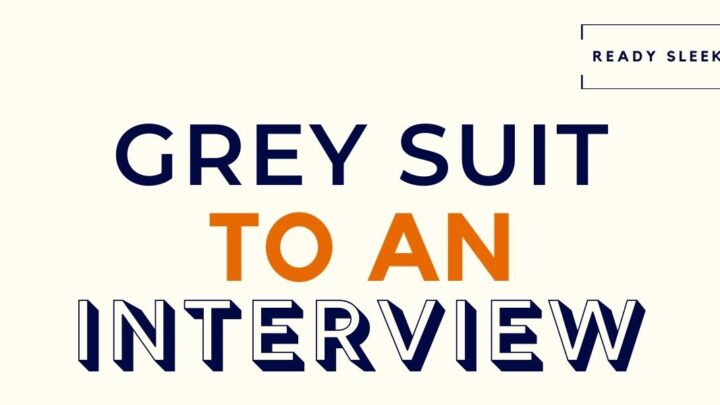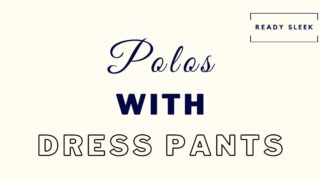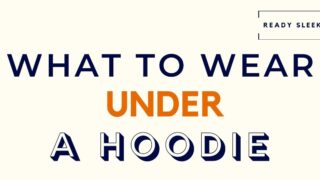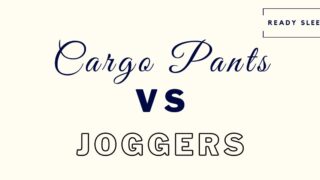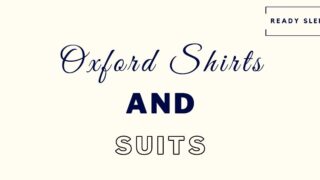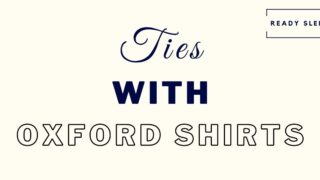Dressing for an interview is never a fun experience. It’s easy to worry whether your outfit is too much or too little. The question is, can you wear a grey suit to an interview?
A grey suit would be appropriate for interviews, except in rare instances where it may come across as overdressing. Stick to worsted wool in darker shades of grey for more formal interviews and combine it with a white dress shirt.
Although that’s the short answer, there’s more to it.
After going through some essential tips for pulling the look off in the most effective way possible, I’ll finish up with a couple of frequently asked questions.
Let’s get to it.

7 Tips For Wearing A Grey Suit To An Interview
Consider all of these tips before putting together your final outfit.
1. Make Sure It’s Appropriate
I’ll start off by saying that a grey suit is so traditional and conservative that it’s likely to be “appropriate” for interviews in the majority of industries.
Sure, there’s a chance you might be overdressing, but that’s a whole lot better than underdressing.
So, before you start worrying too much, note that there’s a high likelihood that it’ll be completely fine no matter what job you’re applying for.
However, there may be jobs where it’s considered overdressing to the point where it can come across as eccentric.
These are usually jobs or industries where it really won’t matter what you’ll be wearing for the day-to-day job.
You’d be wearing extremely casual clothes or sturdy workwear. A grey suit would be so far off from what you’d be wearing for the job that wearing one to the interview might take the interviewer by surprise.
It could be overdressing to the point where it’s unusual and distracting. Overall, this isn’t great.
Consider a sharp, yet more casual alternative instead.
A cardigan, Oxford shirt, and chinos would usually be a better way to go in these cases. It might still be considered pretty formal for that particular industry, but not so formal that it would be considered unusual.
If, on the other hand, you’re applying for a job in a more formal workplace (eg. an office setting, a corporate setting, or even a “business-casual” setting), a grey suit would be a much more appropriate option.
Remember, even in more “relaxed” business-casual settings, you’ll want to dress formally for the interview. A grey suit would usually be ideal. Take things a notch up for the interview, then take it down to a more relaxed level once you get the job.
2. Choose A 2-Piece Over 3-Piece Suit
In most cases, it’s best to avoid 3-piece suits when attending an interview, even in formal and corporate settings.
The reason for this is that 3-piece suits are usually worn to social formal events and not to work.
Wearing a 3-piece suit to an interview would almost always be considered overdressing and unnecessary.
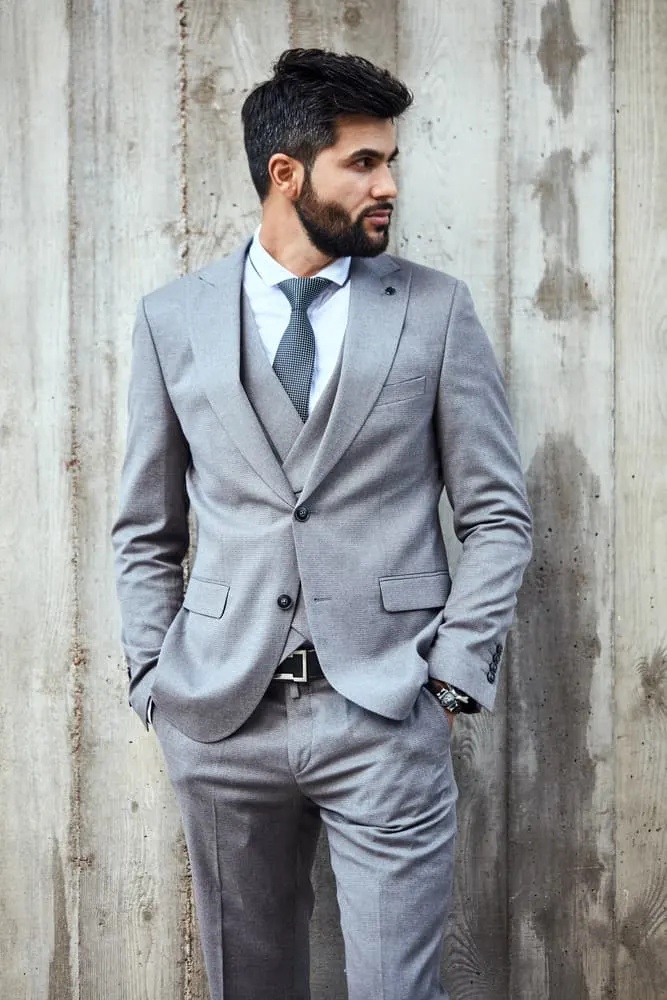
Image From Deposit Photos
Taking things a notch further, it could even be considered attention-grabbing or eccentric. It could indicate that the interviewee cares more about style than substance and work.
A rare exception might be if you’re applying for a very senior position where your experience and qualifications really do speak for themselves and the interview is more of a formality.
In these cases, it’s almost as though you’ve earned the right to be a little more attention-grabbing and eccentric with your sense of style. A 3-piece suit might be OK.
But for the vast majority of people, a grey 2-piece suit would be a much better and safer option.
3. Consider The Shade Of Grey
For interviews in more corporate and formal work settings, a dark grey suit would be more appropriate. If the work setting is more relaxed or “business-casual”, a light grey suit would usually be fine.
“Grey” is a broad term that includes a variety of different shades and tones. You’ll find 2-piece suits in all of them.
In general, the more formal you want to go, the darker your grey suit should be.
To use the same example, in corporate settings you’ll definitely want to dress more formally. For the job itself, you’ll usually be expected to wear a pretty dapper suit.
For interviews, you’ll want to take things a notch above this. A dark grey or charcoal suit would be more appropriate than a light grey one.
In many ways, this is even better than a black suit. While black suits definitely look formal, they can sometimes come across as a little immature.
Dark grey would be a more stylish option.
In more relaxed work environments, light grey suits would definitely be appropriate. The perfect example of this sort of setting would be the “business-casual” office.

Image From Deposit Photos
Business-casual can mean different things depending on who you ask, but in general, it’s safe to suggest that OCBD shirts, cardigans, chinos, and knit ties would be reasonable.
However, because you’ll want to dress a notch more formally than this for the interview, a 2-piece suit would be more appropriate.
Dark grey might be too formal here. Go for a lighter shade of grey instead.
4. Go For A Light And Neutral Shirt
When wearing a grey suit to an interview, white or light blue dress shirts are usually the best option. They’re subtle and muted enough to blend seamlessly into the outfit without drawing too much attention.
When it comes to the shirt, the more understated and neutral you go, the better.
You want a color that works well with grey, but would also never be considered out of place in a work setting.
Over the years, white and baby blue dress shirts have become staples of office workwear and so they’re very hard to go wrong with.
“Baby blue” is a poorly understood color and shirts are often labeled as such incorrectly. In general, the lighter the shade of blue, the better.
In general, avoid wearing any shirt other than a dress shirt. While an Oxford shirt might be OK for a business-casual work setting, for the interview – wear something a little more formal.
5. Consider The Suit Fabric
A suit’s fabric plays a huge role in determining how formal it looks.
When you’re dressing for a more formal work environment (eg. corporate settings), go for a fabric that has a little more sheen to it and doesn’t wrinkle easily.
The shinier and smoother the fabric, the more formal it’ll look.
Worsted wool is the classic example of a formal-looking fabric that would be perfect for a grey suit in a formal, corporate setting.
If you don’t need or want to go that formal for the interview, you could go for a more “casual” suit fabric or weave.
Potential examples include corduroy, cotton twill weaves, tweed, and potentially even linen.
Just remember, the more rugged and wrinkly the fabric, the more casual it’ll look.
You could argue that the more casual you go with the suit, the more risk of underdressing you’ve got.
Because of this, it’s really important to carefully consider how relaxed the work setting you’re applying to work in actually is.
If a cardigan and chinos/dark jeans would be fine to wear to work, there’s a great chance that a rugged grey corduroy or twill suit would be perfectly fine for the interview.
The darker you go with the grey suit, the less likely it is that you’d be seen as underdressing in any case.
6. Add Some Color With The Necktie
Burgundy red, navy blue, and maroon ties work well when wearing a grey suit to an interview. They add a splash of color while still remaining dark and muted enough to look professional.
The key here is to add just enough color to look interesting without being distracting or attention-grabbing.
In general, it’s best to stick to a dark motif.
While black or even grey neckties would work well with a grey suit (assuming the grey is of a different shade to the suit), you’d miss out on the opportunity to add a bit of color to the outfit.
If possible, however, avoid patterns.
While patterned neckties may be absolutely fine if you were to start working in that setting, when dressing for an interview, stick to solid-colored ties.
Patterns can sometimes be distracting and come across as a little too fun and whimsical for what’s supposed to be a serious setting.
7. Be Careful With The Accessories
While a grey suit is usually understated and traditional enough to not draw any attention at any interview, you’ll still want to take it easy with the accessories.
In general, avoid excessive jewelry. A ring or two would probably be fine, but large and in-your-face chains or necklaces and loud earrings would usually be too much.
Always go subtle on the jewelry, especially shiny and eye-catching jewelry.
If you’re wearing a pocket square with your grey suit, keep things as simple and subtle as possible.
A white pocket square with a straight Presidential fold would be your safest option. Anything bolder or more colorful would usually be too social for a work setting.
Frequently Asked Questions
Here are a couple of frequently asked, yet rarely answered questions to really round things up.
Should I Wear A Blue Or Grey Suit For An Interview?
While both blue and grey suits would usually be appropriate for an interview, grey suits would be better if you’re looking to dress more conservatively. However, both charcoal grey and navy blue will usually look formal enough for even the most conservative interview settings.
Charcoal grey and navy blue suits are commonly worn to formal interviews without any trouble.
Because of this, it’s tough to go wrong with either of them.
In these cases, focus more on the fabric and weave of the suit and less on the color.
If you’re going for a lighter and brighter shade of blue, however, you’ll need to consider whether it comes across as too casual or “social” for an interview.
Avoid these shades of blue wherever possible, and stick to darker shades like navy blue.
Can I Wear A Medium Grey Suit To An Interview?
A medium grey suit would be fine for most interviews, except in formal or corporate settings where a darker shade of grey would be more appropriate.
If you’re applying for a job in a very formal or corporate office environment where a dark 2-piece suit would be required for the job itself, you’ll want to dress even more formally for the interview just to be safe.
A darker shade of grey (eg. charcoal grey) would usually be better than a medium grey suit in these instances.
Conclusion
There you have it. Hopefully, everything you needed to know about a question that’s often asked but rarely answered properly.
Enjoy.
Ready Sleek founder. Obsessed with casual style and the minimalist approach to building a highly functional wardrobe. Also a fan of classic, vintage hairstyles.

